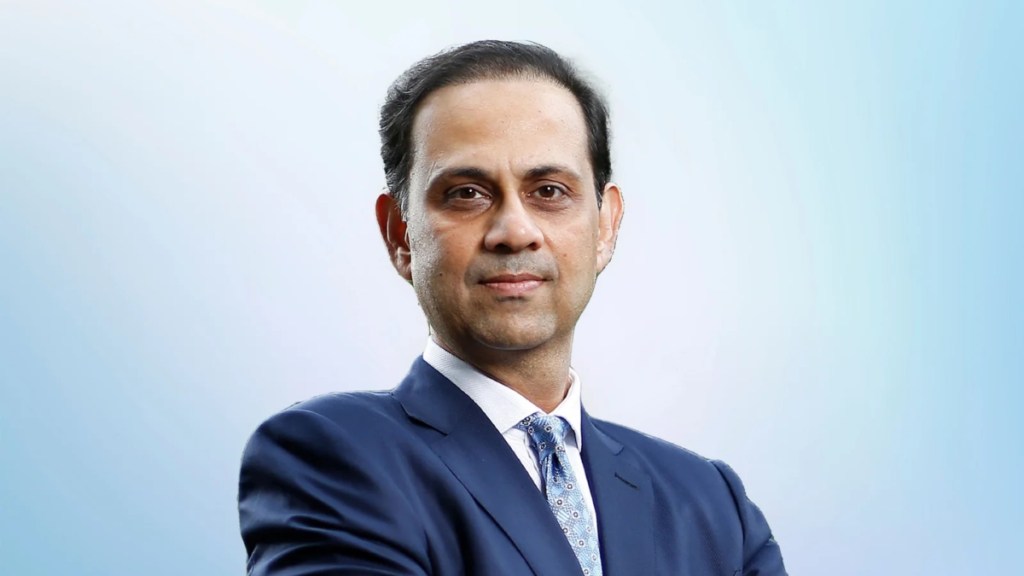Fortune, they say, favours the bold. That certainly holds true for Sanjiv Bajaj. Although he inherited what was considered at the time to be the less-glamorous piece of the family business, the younger son of industrialist Rahul Bajaj has built a fabulous financial services franchise. While Bajaj Finance is a powerhouse in itself with a customer base of 97 million, Bajaj Finserv has made a mark in the insurance space. The group’s buyout of Allianz’s stake in both the life and general insurance businesses, for a sum of `24,180 crore, is a sign of its ambition. Bajaj is confident of being able to run the business profitably on its own and is no longer willing to share the spoils.
There’s no reason why he should. At a time when many a shadow lender has fallen by the wayside, his measured growth strategy has put the business in a formidable position from where it can take on the mightiest. Bajaj Finserv’s consolidated profits for 2024-25 are estimated around `18,000 crore. At its peak, the market capitalisation of the Bajaj twins — Bajaj Finance and Bajaj Finserv — was Rs 8.46 lakh crore, a level not yet reached even by State Bank of India. Today, the gap between the value of the country’s biggest lender and what the famous Pune boy has built is nearly Rs 2 lakh crore.
The buzz in the stock market is in stark contrast to Bajaj’s demeanour. There’s very little or no hype, he does things more quietly. Not for him the chaos and noise of the big city; he prefers the peaceful Pune life where he can swim, play tennis and the odd game of basketball, and spend time with the family. But he’s as excited about the business today as he was when he first started out. Sanjiv was always convinced the rapid digitisation of financial services — driven by the killer combination of cheap smartphones and low-cost high speed data — would be a game changer. And his businesses have cashed in on this trend.
Today, Bajaj Finance has loans worth Rs 4 lakh crore on its balance sheet and the portfolio comprises everything from mortgages and SME loans to consumer credit. Not permitted by the regulator to issue a credit card, Bajaj Finance instead rolled out an EMI card and today has a base of over 56 million. While the general insurance firm holds the number 2 spot among private insurers, the life insurance company is ranked fourth. Importantly, as Sanjiv has also pointed out, the businesses are de-risked in terms of the distribution as they work with a large number of partners.
To be sure, there have been some slip-ups; in late 2023, the regulator asked the lender to stop giving loans via the eCOM and InstaEMI Card products. But that was soon sorted out.
Bajaj has often expressed his wish for a bank licence, which would make it easier to access deposits, and the group did put in an application many years ago. But the lack of a licence hasn’t really been a deterrent so far and the Bajaj companies have actually done much better than some banks. Indeed, they have weathered the ups and downs of business cycles better than most.
That’s probably what gives Bajaj the confidence to say those who don’t want to receive telemarketing calls from Bajaj Finance must “make sure” they don’t ever apply for its products and solutions. Some said his remarks bordered on arrogance but that would be an unfair assessment of the man.
In the December 2024 quarter, the company added 5 million new customers, twice the number added in the same quarter of 2022. At 55, Bajaj has many years ahead of him and should a banking licence come the group’s way, he can build another Kotak Mahindra Bank. In the meantime, having wrapped up the Allianz transaction, he can indulge his sweet tooth.
Many don’t know that Bajaj didn’t start his career in the family firm. He got his first apprenticeship in a Tata Motors shopfloor, located a few kms away from the Bajaj home and factory. His first project was to design a new mechanism to deliver fuel to the fuel-piping system of a vehicle. He was happy in his comfort zone till his time in Warwick Engineering in the UK and then at Harvard transformed his thinking.
Bajaj would often talk about his “glorious” days at Harvard where he did a two-year MBA programme. In two years, he ran through 700 case studies based on situations that global companies faced. What made it particularly tough was that he had to come up with solutions to three case studies every day, forcing him to take quick decisions. And there were 89 other students out to demolish his solution. That intense training obviously proved handy later in life.

